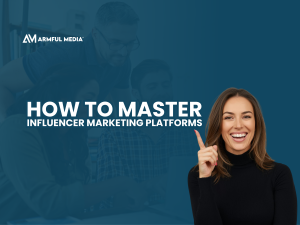Brands often send products to influencers or creators to spark attention and build trust. The two most common ways are product gifting and product seeding. These terms are sometimes used as if they mean the same thing. In this blog, we’ll make the differences clear so you know when to use each approach.
What Is Product Gifting?
Product gifting is when a brand sends free products to influencers, customers, or creators with no strings attached. There is no agreement that the person has to share the product online. The brand hopes that the recipient will genuinely enjoy the gift. If they choose to post about it, it becomes a bonus.
Gifting works well as a goodwill gesture. It helps brands start relationships without pressure. This method is often used to create buzz and show appreciation. Many beauty, fashion, and lifestyle brands use gifting through PR boxes or special packages.
What Is Product Seeding?
Product seeding is a more focused strategy. Here, brands carefully pick influencers or creators who are most likely to help their product reach the right audience. The brand sends products to them to encourage authentic use and content. Unlike gifting, seeding is less random and more planned.
Seeding is often tied to a specific goal, like a new launch or campaign. Brands may choose creators with certain values, styles, or follower counts. While there is still no strict contract, there is a clear hope that content will come from it. Seeding helps brands increase visibility and connect with audiences through trusted voices.
Differences Between Product Gifting & Product Seeding
While both involve sending free products, the purpose and process make them different. Gifting is casual and broad, while seeding is strategic and targeted. One is about goodwill and surprise, the other is about growth and planning.
| Aspect | Product Gifting | Product Seeding |
| Intent | Build goodwill, show appreciation | Drive exposure, support campaigns |
| Targeting | Broad, less selective | Narrow, highly selective |
| Expectation | No obligation to share | Hope for coverage, but not forced |
| Measurement | Harder to track results | Linked to campaign goals and KPIs |
| Relationship | Early-stage, casual outreach | Strategic, long-term influencer ties |
Pros & Cons of Each Approach
Product Gifting is about surprise and goodwill.
Pros:
- Builds goodwill at low cost
- Easy way to reach many people
- Can spark organic, authentic content
Cons:
- Unpredictable results
- No control over what is shared
- Products may go unused or unnoticed
Product Seeding is about strategy and targeted reach.
Pros:
- More measurable and goal-driven
- Higher chance of getting content
- Reaches a relevant audience
Cons:
- Takes more planning and effort
- Still no guaranteed content
- Can require more resources to scale
Best Practices For Using Gifting & Product Seeding Successfully
Both methods can be effective when applied with intention. A thoughtful approach helps you get better outcomes and build stronger relationships with creators.

1. Research Your Audience & Creators
Know exactly who you want to reach and why it matters. Randomly sending products often leads to wasted effort and budget. Study the creator’s audience, style, and past brand collaborations. The closer the match, the stronger the impact of your outreach.
2. Personalize Your Outreach & Packages
Generic outreach often feels cold and gets ignored. Show genuine interest in the creator’s work by tailoring your message. Add thoughtful touches like handwritten notes or custom packaging. These small details make the experience more memorable and appreciated.
3. Be Clear About Expectations Without Pressure
It is fine to share what kind of outcome you hope for with seeding. However, avoid making it feel like an obligation or contract. Creators value freedom to present products in their own voice. Respecting that freedom often leads to more authentic and engaging content.
4. Track Mentions & Engagement
Always monitor who is posting about your products and how people react. This shows which creators are truly driving awareness and interest. Use tracking tools to measure reach, engagement, and conversions. Reviewing the data helps you refine future gifting or seeding campaigns.
5. Focus On Building Long-Term Relationships
Think of gifting and seeding as steps toward deeper connections, not quick wins. Seek out creators who genuinely like and use your products. Building loyalty over time creates stronger brand advocates. Consistent relationships lead to trust, and trust leads to better results.
When Should You Use Product Gifting?
Product gifting is best when the goal is to raise awareness and build early goodwill. It is not a performance-driven tactic but a way to create positive brand impressions. Gifting works well for brands that want to introduce themselves without demanding results. The focus is on sparking interest, not on controlling outcomes.
- Launching A New Brand: For startups and small businesses, gifting can create valuable first impressions. Sending products to influencers introduces your brand in a low-pressure way. Even if there is no content, it helps get your name recognized. Any organic posts become an added bonus.
- Showing Customer Appreciation: Gifting is often used to reward loyal customers. A surprise package makes people feel valued and connected to the brand. This can turn regular buyers into advocates who share their experiences online. Such word-of-mouth is both authentic and effective.
- Generating Buzz For Awareness: Brands sometimes need attention more than sales at the start. Sending products to a wide range of influencers can spark conversations. Even small mentions can build momentum across audiences. This creates visibility that advertising alone may not achieve.
- Collecting Informal Feedback: Gifting provides insights into how people respond to products. Recipients may share honest reactions that reveal strengths or weaknesses. This feedback can guide product adjustments before bigger campaigns. It also shows how people naturally talk about the brand.
- Building Early Influencer Relationships: Many partnerships start with simple gifting. Sending products without pressure shows respect for a creator’s independence. If they enjoy the product, they may share it authentically. Over time, this can lead to deeper collaboration.
Note: Product gifting is best for awareness, goodwill, and relationship-building. It should not be expected to deliver consistent results or measurable ROI. Brands that use gifting successfully see it as planting seeds for the future. The real value often comes later through organic advocacy.
When Should You Use Product Seeding?
Product seeding is more strategic and is used when brands want measurable influence. It involves selecting specific creators whose audiences match campaign goals. Seeding is tied to awareness, credibility, and reach, but with more planning than gifting. The purpose is to maximize impact with the right people rather than many.
- Supporting A Product Launch: Seeding is highly effective for new product launches. Carefully chosen influencers can showcase the product to audiences that fit the target market. Their content creates excitement and urgency around the release. This drives both awareness and credibility at the same time.
- Targeting Niche Audiences: Some products appeal to very specific groups, such as fitness or gaming communities. Seeding ensures products reach the right people through trusted voices. Influencers in a niche provide credibility that broad gifting cannot match. This makes seeding ideal for specialized markets.
- Driving Campaign Goals: Brands often use seeding to support wider campaigns. Sending products to selected creators helps generate fresh, authentic content. That content can be shared or repurposed to extend campaign reach. This approach ties product exposure directly to marketing objectives.
- Scaling Visibility Strategically: When a brand wants to grow, seeding provides faster and more controlled reach. Sending products to many relevant influencers expands awareness in a short time. The combined impact is stronger because the content comes from multiple trusted sources. This makes seeding effective for scaling campaigns.
- Deepening Creator Partnerships: Seeding shows that a brand values specific creators and their communities. Unlike broad gifting, it is selective and intentional. This often leads to stronger, long-term partnerships. Those relationships create loyalty and more consistent exposure over time.
Note: Product seeding is most effective when it is planned with a clear strategy. It works best when the brand knows its goals and chooses influencers carefully. While results are still not guaranteed, the likelihood of impact is higher. Seeding is a scalable way to connect with the right audience at the right time.
Final Thoughts
Product gifting and product seeding might sound alike, but they serve different purposes. Gifting is about goodwill, surprise, and getting your name out there without pressure. Seeding is more strategic, with clear goals and a focus on reaching the right people. Both can help a brand grow in different ways.
The smart move is knowing when to use each one. Gifting works well for creating buzz and starting relationships. Seeding is the better choice when you need targeted reach and stronger campaign results. Together, they can build awareness, trust, and long-term success for your brand.
Want to make gifting and seeding work smarter for your brand? Book a discovery call today and let us help you build a strategy that drives growth and lasting creator relationships.

The Armful Media Content Team is a group of skilled writers, researchers, and strategists passionate about influencer marketing. We create content that drives real results, engages audiences, and builds trust, helping brands expand their reach and connect with their audience in meaningful ways.








